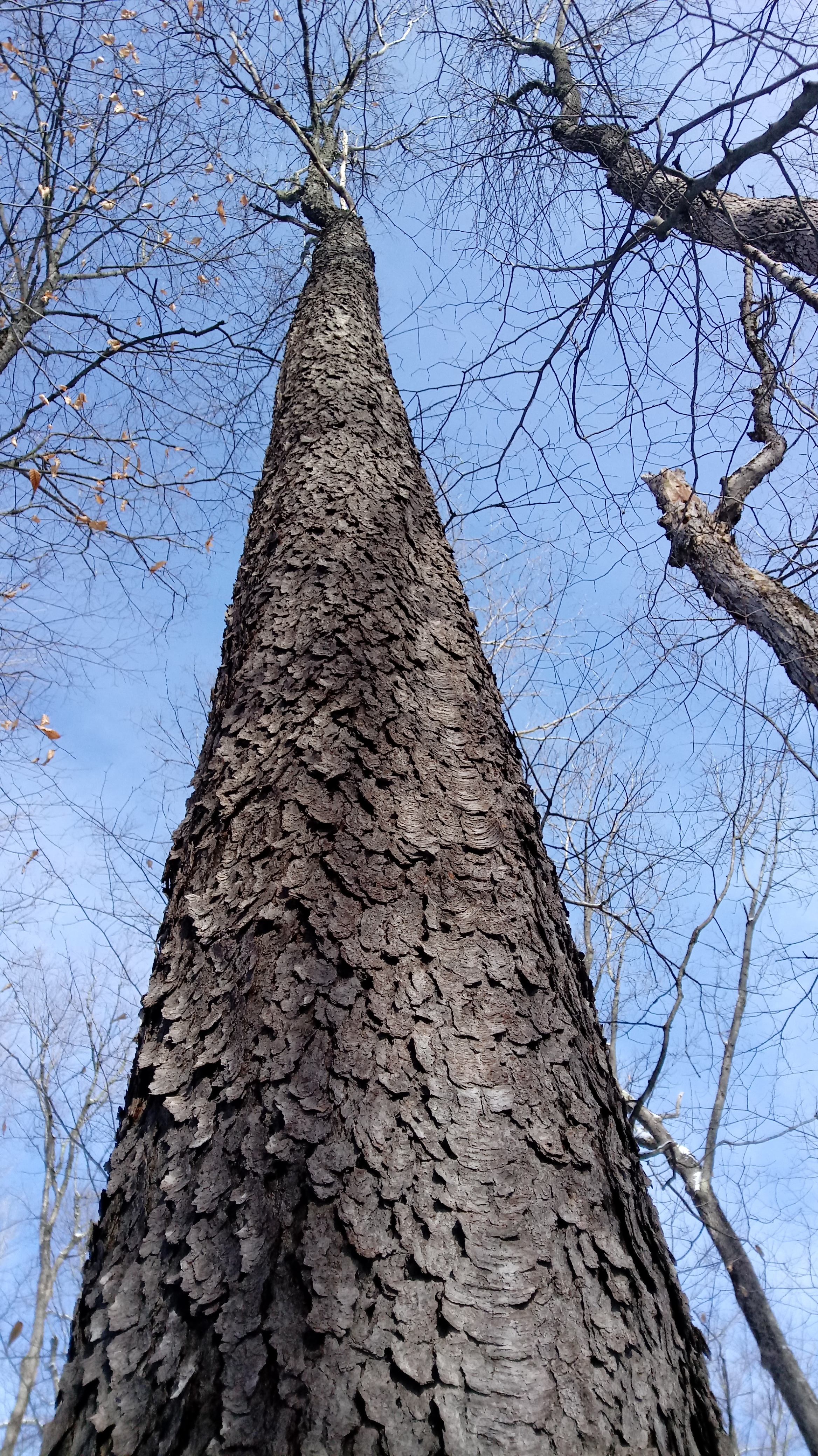
-- Anita Sanchez
Long ago I worked at a nature center, leading walks for groups of school children on field trips. Buses would arrive, unloading hordes of kids who would stand on the parking lot blacktop looking a trifle uneasy. And whenever I started a forest walk, I’d gather the students before we hit the trail. “Now, there are two words I always say to anyone who goes into the forest,” I’d tell them. “Two very important words.” And they’d all look at me, solemn and nervously attentive. Not just students, teachers too.
Because they figured that the forest is not a place where you go lightly, where you just wander around carelessly. There have to be rules, warnings, and safeguards. They were expecting that the important two words would be “Don’t Touch!” or “Be Careful” or “Stay Close,” or perhaps “Poison Ivy.”
So they were always astonished when I revealed that the two crucial words were: LOOK UP. The idea that we were going to wander around in the woods having fun and looking for stuff took a while to sink in, but after a while they loved it. We’d stop in a grove of tall young pines, and watch them dancing and swaying back and forth in the breeze. That first look up always evoked a one-word response: “Wow!” After a while, all I’d have to do was hold up two fingers, and everyone would look up.

Now I don’t do nature walks very often, and I tend to forget my own advice. As I walk through the day, I’m constantly looking at my feet, my watch, my phone. I forget to look up, to look up at the ceiling of green leaves woven into blue sky. What’s overhead? What shape are the clouds? Is there a wind high above, revealed by the tips of the pines tossing and waving? Or a vulture soaring and tilting, wings in a shallow V?
One spring day I remembered to glance up, and overhead there were dragonflies, all flying in a narrow path stretching across the sky. They must have been migrating, thousands of them. Their flight was utterly silent, so that I never would have noticed it if I hadn’t looked up. How many times have they flown overhead without my seeing them?
One of the most fascinating things about looking up at the trees of Landis is to observe how they relate to each other. If you look up through the branches towards the sky, you’ll see that trees are constantly striving to avoid having their branches shaded out by their neighbors. Since each leaf depends on light to jumpstart the process of food-making known as photosynthesis, it’s essential that every leaf get the maximum amount of sun. Overhead the trees are pushing and shoving each other in a slow-motion struggle to steal the sunlight.
For me, looking up is a hard habit to create. Birders do it all the time: they’re used to staring up into the branches, endlessly seeking that little flash of color or bit of movement. But for those of us who are more into wildflowers, ferns, and moss, it’s good to occasionally get our noses off the ground and into the sky.
So the next time you stroll around the Landis grounds, remember to look up every now and then. Take a look at that wide, bright world overhead you’ve been missing.
Just don’t trip.
